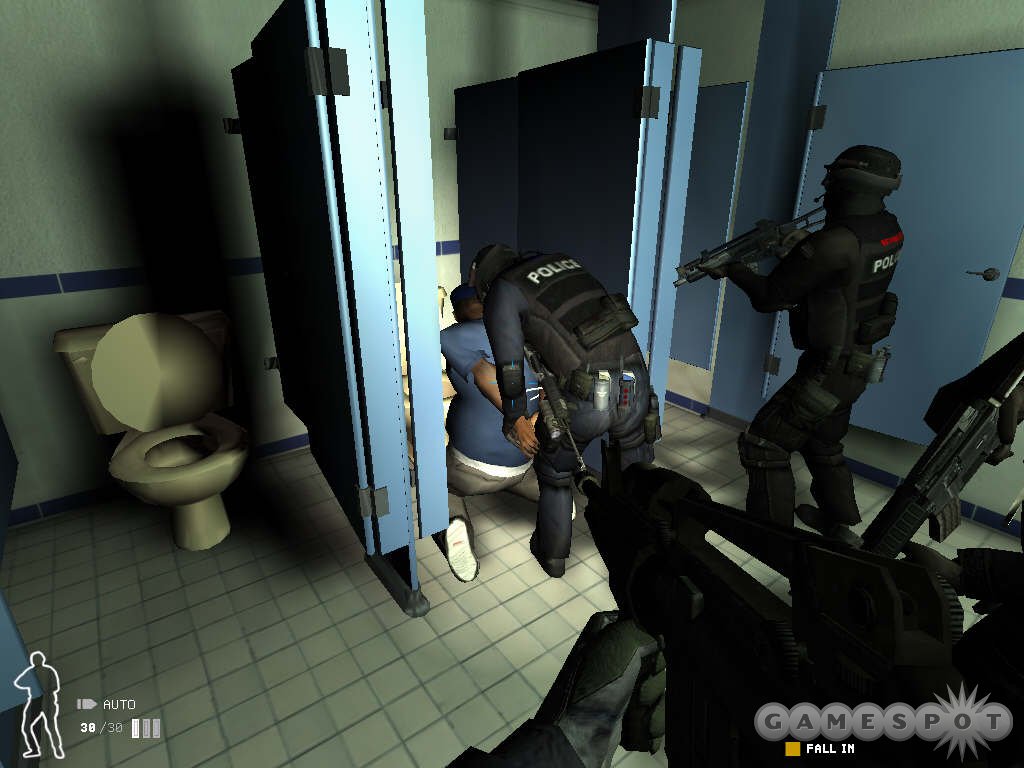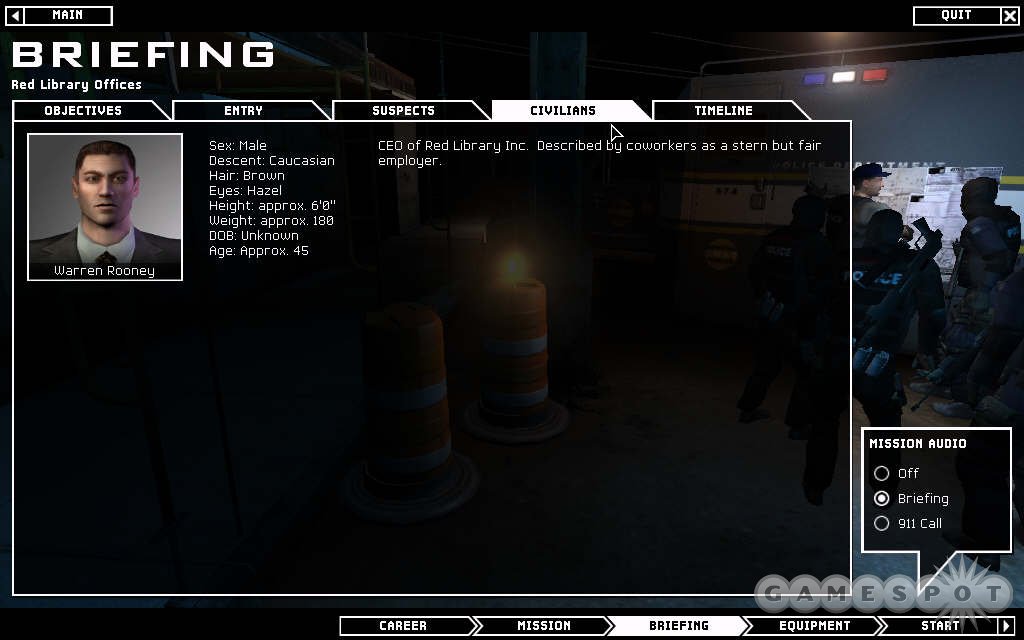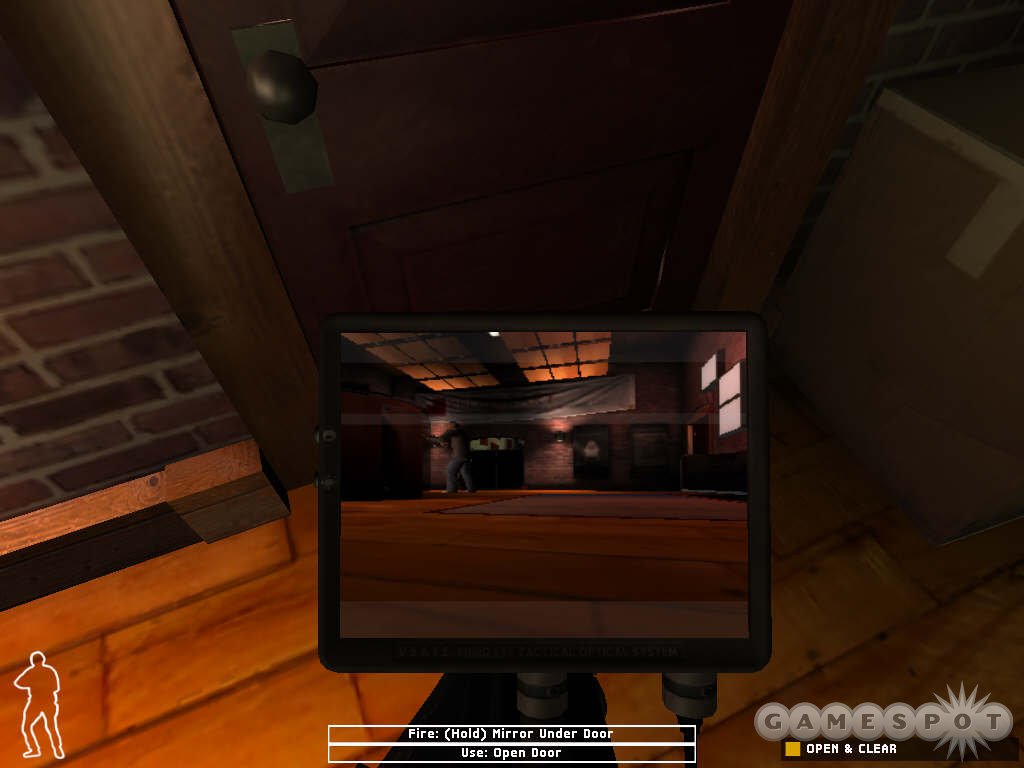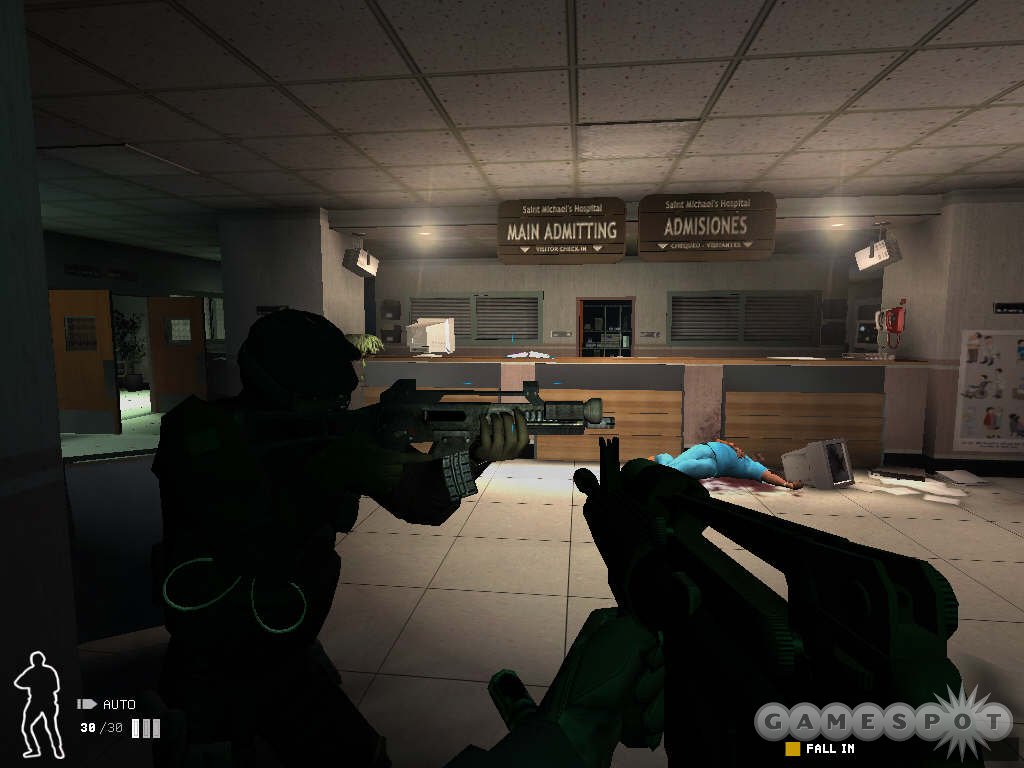The original SWAT game, released in 1995, was Daryl F. Gates' Police Quest: SWAT. Named after the former Los Angeles Police Chief who formed the world's first SWAT team, the original SWAT and its sequel were actually strategy games. It wasn't until SWAT 3: Close Quarters Battle was released in 1999 that the series transitioned into the first-person-shooter genre. Throughout the years, each SWAT game has attempted to simulate what it's like to lead the world's most highly skilled and trained police officers into dangerous confrontations. It's been more than five years since the last SWAT, and the newest iteration of the series is the best one yet, offering an intelligent and flexible interface, a varied and highly replayable campaign, as well as multiplayer modes that include cooperative play.

As with the real-life SWAT teams, your job as an element commander in SWAT 4 is to take your five-man team into dangerous situations and defuse them. These situations range from a botched jewelry heist to high-risk arrest warrants to a raid on an illegal casino. In almost every mission, there are innocent civilians mixed in with the bad guys. Those of you who are Rainbow Six and Counter-Strike veterans will need to cool it on your itchy trigger fingers. Even when you do run into armed criminals, you don't have carte blanche to shoot them immediately. You have to follow the same strict rules of engagement as a real police officer and do whatever you can to subdue and arrest suspects without lethal force. Your guns are meant to be a last resort and should only be used if an armed suspect is an immediate threat to your team or civilians. This is the primary detail that separates the SWAT games from the military-style action games. The rules of engagement add a good deal of difficulty to the game, and SWAT 4 pulls this off well. At the end of each mission you're graded on how well you did, and more points are awarded for arresting as opposed to killing suspects. You are assessed big point penalties for improper use of force, and for the most part, these penalties are levied fairly and intuitively.
The 14-mission campaign isn't linked in any way. There's no overarching storyline that connects them all, so the campaign plays out just like a series of stand-alone missions. It starts you off with a training level that does a good job of acquainting you with the basics of using your weapons and commanding your teams. It's here that you're introduced to the game's interface. Your four subordinates are divided into a pair of two-man groups: red and blue. You can issue orders to the entire element or to each pair separately. Switching between the groups is done by tapping a key. The commands you give are done in a context-sensitive manner and are based on what your crosshair is pointing at. Point at a door and hold down the right mouse button, and you're able to access a menu that gives you different options, such as "Open and Clear," which orders your men to open the door and enter, or "Open, Bang, and Clear," which will order your men to open the door, toss in a flashbang grenade, and then run into the room to clear it of threats. Point your crosshair at a civilian and you can order your men to zip cuff him or her for safety. Aim at a locked door and you can order your men to pick the lock or blow it open with a charge or breaching shotgun.
The context-sensitive interface extends to a multipurpose use button as well. Point it at a suspect or hostage, and the use button will cause you to yell at the person to put his hands up and surrender. You'll be doing this a lot in SWAT 4, as you attempt to get suspects to respect your authority before shooting them. Point your cursor at a dropped weapon and you can pick it up to secure it. Aim at a cuffed criminal or civilian and your use key will radio a status report into command.
There are also interface options that allow you to remotely command one of your squad elements. For example, you can order red team to stack up at a door, and then leave them there while you take blue team around the corner to a second door (which leads into the same room). Even though you're out of visual range of red team, you can bring up a picture-in-picture window of what red team is seeing, and through that window you can order them to enter the door they're standing in front of. This is a neat option that allows you to simultaneously enter a room that has two doors. During a given mission there are also picture-in-picture windows you can open that give you a view of what external snipers are seeing, and you can even control your snipers via those windows.
It seems like a lot to take in, and certainly it takes a few mission runs before you become used to all the options available to you. But once you've gotten a few missions under your belt, ordering your squad elements and moving along with them becomes second nature. The structure of the campaign seems to mimic this standard learning curve, as the first few missions are rather simple and easy, but the difficulty ramps up considerably in the later missions, where you'll find complicated building architecture and numerous heavily armed suspects.

Before going on each mission you can listen to a quick briefing, and this presentation is done well. The premise of each mission is explained by a radio dispatcher, and further context is given by the element commander. In certain missions you can even listen to a 911 call to glean more information. It's important to study these briefings carefully as they can contain photographs of suspects and hostages, as well as floor plans of the buildings you assault. Some missions have more available information than others. In others, you only have a rough sketch of the building and no clear idea about the number of suspects and hostages. Based on this information, though, you can choose a weapon and equipment loadout for your team.
SWAT 4 includes a good selection of assault rifles, submachine guns, shotguns, and nonlethal weapons like Taser guns, pepper spray, and a paintball gun modified to shoot pepper balls. You can also choose between ammo types like hollow-point bullets for more stopping power against unarmored suspects, or full metal jacket for better penetration against body armor. The grenades and gadgets are probably the most important selections. You'll need to carry in flashbang and tear gas grenades for assaulting rooms, and you also have special gear like the Optiwand, which is a fiber-optic camera used for peeking around corners and under doors. Door wedges allow you to seal off exits to keep suspects from running away into rooms you've already cleared.
Once you're actually in a mission, you'll find that the game rewards patient and deliberate play. The nature of SWAT 4 as a realistic simulator is that it's very easy for you and your team to get wiped out if you make any kind of mistake. Charging into rooms without first tossing in some kind of grenade to incapacitate or distract suspects inside is a surefire recipe for disaster. As a result, once you get the feel of the game, you'll find that the gameplay in SWAT 4 is fairly methodical, punctuated by a few brief moments of intense action. Stick an Optiwand under a door to check for occupants, open (or blow open) the door, toss in a grenade, then rush in and clear threats. Repeat on the next door.

What ends up complicating matters is the varied artificial intelligence of the enemies and hostages you find. Some criminals will give up the moment you yell at them to drop their weapons. Others won't surrender unless you incapacitate them with a flashbang or tear gas, or even a Taser gun shock. Some immediately shoot back, while others will try to run away and escape into other rooms. Bold suspects may even run into the room you're in and unexpectedly attack you. Hostages are equally unpredictable in how they behave. Most hostages comply immediately, but some need to be hit with a nonlethal weapon before they can be restrained.
The fun in SWAT 4 comes in trying to sort out all the mess and bring order to the chaos while remaining within a police officer's rules of engagement. Thankfully, the AI of your squadmates is generally smart enough to handle most situations. They're usually good about engaging suspects and only shooting them when appropriate. They're also extremely accurate when called upon to fire. Your squadmates are even smart about moving up and down stairways and keeping their weapons pointed up or down as appropriate. The main issue is that your AI teammates are sometimes slow on the trigger. Often times, in an attempt to get armed suspects to surrender, they give enemies too much time to fire back, and as a result, it is difficult to get through many of the later missions without sustaining casualties. It can also be annoying in the cases where your squadmates get stuck on level geometry, or are slow to comply with orders because they're too distracted with a suspect spotted through an interior window.
Despite the flaws, SWAT 4 is extremely unique in its gameplay style and premise, and it executes cleanly for the most part. What's more, suspects and hostages spawn randomly in each level every time you play, which adds a great deal of replayability to the game. No matter how many times you've played a mission, you can never be too sure of the whereabouts of suspects, which makes for a consistently intense experience. Replaying levels does make them easier over time, but that's not from memorizing the locations of enemies, it's from gaining a better understanding of the building architecture, which plays a huge role in the game. For further replayability, SWAT 4 even includes a mission-maker interface that lets you customize any of the levels to include variable numbers and types of suspects and hostages, as well as specific mission requirements, like sustaining zero casualties. These missions are saved as pack files, which can be traded with your friends.
Multiplayer modes also contribute to the great overall value of SWAT 4. While the game does include team-based modes that are playable for up to 16 players online, the most attractive option is cooperative mode for up to five players. You can play out any of the game's built-in missions or you can play one of your custom-built missions in cooperative mode. Co-op SWAT 4 is extremely fun, and the interface allows any player to issue orders. Direct your teammates to open a door, for example, and they'll see a red arrow over the doorknob to indicate which door you're talking about. While the other gameplay modes like VIP escort, team-based deathmatch, and a bomb-defusing game are fun in their own right, SWAT 4's co-op mode is easily the best aspect of its multiplayer options, especially considering the dearth of cooperative games available today.
SWAT 4's graphics mirror its gameplay: it's great for the most part, but it has a few noticeable flaws. The character models of your team are fantastic, and they animate beautifully when executing scripted moves like breaching open a door and entering a room. They're modeled in such detail that you can even see the number and type of grenades each of your teammates has left by glancing at their utility belts. The models of the various hostages and suspects, however, don't look quite as good. They're noticeably blockier, and their joints can look and bend a bit strangely while you're cuffing them. The level architectures are very well detailed, and each building's layout looks and feels believable, including the degree to which they're furnished. SWAT 4 also does a good job with lighting, as you'll need to rely on your tactical light a lot in dark rooms and areas. The biggest downside to the game's graphics is that the frame rate can be a big issue. SWAT 4 chugs noticeably on machines with 512MB of RAM. Upgrading to 1GB can make most situations play out a lot smoother, but in intense firefights with tear gas in the air and multiple suspects and squadmates firing, the frame rate still takes a big nosedive.

SWAT 4's sound effects are sharp and realistic, particularly the gun shots, which sound quite powerful. What you'll hear most in the game is yelling, both from suspects and hostages, as well as from your own squad who are screaming for everyone to lie down and surrender. There's a good deal of cussing in the game, which reflects the intense, life-or-death scenarios you face. The whimpering from wounded civilians and suspects can get annoying at times, but it can also be funny to hear the grumbling complaints from cuffed criminals. There are other nice sound details in the game, such as the metal detector in one level that goes off every time you walk through it. SWAT 4 doesn't include much in the way of music, but you will hear fast-paced tunes spool up dynamically every time you enter a confrontation or forcefully enter a room with a grenade blast.
As a realistic police simulator, SWAT 4 definitely hits the mark. Though the frame rate gets chunky at times, and there are a couple of irritating bugs and quirks, the AI delivers on most counts in a game that is designed with great replayability. The cooperative mode is also extremely fun and should make this game attractive for those looking for something to play together with friends at a LAN party or online. If you enjoyed SWAT 3, or if you like tactical-style shooters and are looking for something with a twist, you won't go wrong picking up a copy of SWAT 4.